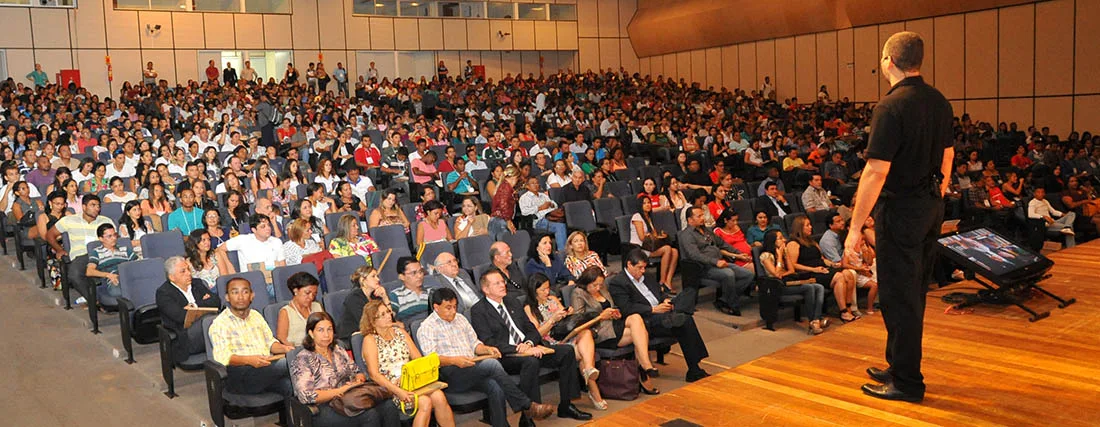How I got started
At some point, every achiever faces the same paradox: accomplishing more than ever, but somehow, feeling behind.
Calendar full. Task manager overflowing. Email inbox a battlefield.
And yet, the more we optimize, the more fragmented we feel.
For years, I lived in this paradox. I read every book on productivity. I studied the best systems. I built intricate workflows. And still — I never felt like I was in control.
Until I stopped trying to manage productivity and started channeling flow instead.
This shift changed everything.
The past: my search for a system that works
I’ve lived multiple professional lives — each of them reinforcing the same lesson: the way we structure our work determines our outcomes, our sanity, and ultimately, our quality of life.
Entrepreneurship & the illusion of growth
For 12 years, from 2007 to 2019, I led a chain of bakeries and cafés in Northern Brazil.

with my wife and a client
What started as a passion — crafting great experiences, serving people, building something meaningful — slowly turned into a relentless machine of expansion, logistics, and operational complexity.
At first, growth felt like progress. More locations. More employees. More customers. But somewhere along the way, I lost sight of why I started in the first place.
The work became less about creating something fulfilling and more about feeding the machine — keeping up with numbers, solving operational fires, and managing the endless demands of a growing business.
I thought better systems would help me regain control. I developed to-do lists, project management software, detailed SOPs — but the problem wasn’t structure. The problem was direction.
I'd built a business, but I'd lost my sense of purpose inside of it.
Growth for growth’s sake had made me miserable. Instead of feeling successful, I felt trapped.
Coaching & consulting: designing systems for others while drowning in my own
At the same time, I was consulting and coaching companies on service strategy and business operations, helping them design service experiences that would set them apart.

Keynote speech to 1,500 teachers and school administrators
I was advising businesses on how to create seamless customer journeys, improve their customer service, and develop structured engagement models. I helped leaders cut through operational noise to focus on what mattered most.
And yet, behind the scenes, I was struggling to apply the same clarity to my own life.
The irony wasn’t lost on me.
I was helping others design systems that worked while I was buried under an endless pile of tasks, scrambling between responsibilities, and failing to create a workable system for myself.
Managing my wife’s musical career: the ultimate complexity test
On top of running a business and advising others, I was also managing my wife’s musical career. It was an entirely different world, but just as demanding.
This meant, among other things:
- Conceiving concerts and shaping artistic direction.
- Producing and booking tours across different regions.
- Securing financing for studio albums and ensuring high-quality production.
- Assembling and managing bands, coordinating musicians, rehearsals, and logistics.
Creative projects don’t operate on clean schedules. A single production involved months of planning, relationships with venues, contract negotiations, and an endless number of moving pieces — all requiring my full attention while I was also running multiple businesses.
Too many trains, no tracks
At any given moment, I was running a chain of bakeries, consulting with companies, and producing a concert tour — each of these requiring precision, structure, and foresight.
I had too many moving trains, but no reliable track system to keep them from colliding.
I thought better tools would solve the problem. I tried to-do lists, project management apps, detailed SOPs, and every popular system — but nothing worked.
- Stephen Covey’s planning system emphasized priorities but lacked flexibility for daily execution.
- David Allen’s GTD was great at capturing tasks but failed at guiding long-term focus.
- Tony Robbins’s RPM helped with the mindset but didn’t translate into a practical, adaptable workflow without a solid piece of software.
I spent years adapting, combining, tweaking their approaches — and others — only to find myself drowning in tools.
I tried using Outlook, Basecamp, Google Calendar, Todoist, Evernote, Amazing Marvin — you name it, I tried it. Every system failed me because either:
- they were built for managing tasks, not channeling complexity into clarity, or
- they were great at capturing narrative but horrible at scheduling tasks, or
- they allowed me to schedule work, but were completely disconnected from my broader vision.
That’s when I started questioning everything: What if the way we approach work is broken? What if the problem isn’t just a lack of structure but a lack of alignment between our work and what actually fulfills us?
These questions would take years to answer. But they led me here.
The present: designing Flow Channeling
Eventually, I stopped looking for the perfect system and designed it instead.
I took everything I had learned — business operations, service design, productivity theory, behavioral psychology — and integrated them into what I call Flow Channeling, a framework that shifts the focus from task management to momentum-driven execution.
Then, I implemented it inside of a planner I designed.
And I built it in Notion, so it has ultimate flexibility and adaptability. Perfect for a solopreneur like me.
For the first time, my workflow wasn’t fighting against me.
- I stopped drowning in task lists and started operating in clear, structured blocks of deep work.
- I stopped juggling priorities and built a dynamic system that adapts to changing needs.
- I stopped feeling fragmented and started working in a state of continuous flow.
The result?
More progress, less stress, and a fundamentally different way of engaging with work and life.
The future: a new way to work
I believe we’re at a breaking point in how we approach productivity.
The world doesn’t need more hacks, more apps, or more rigid systems. It needs a way to align energy with execution.
To move with clarity, without friction. To work in a way that feels natural, sustainable, and deeply effective.
That’s what channeling Flow is about.
This is what I’ll be writing about here. This is what I’ll be coaching on. This is what I’ll be building with others who are ready to step out of the chaos and into something different.
If this resonates with you, I invite you to explore the Flow Channeling Manifesto — an invitation for those of us who are ready to leave behind the task-juggling madness and step into a flow-driven life.
And by the way, I welcome you to reach out anytime. I read all my email.
Martin
